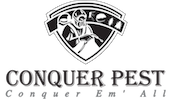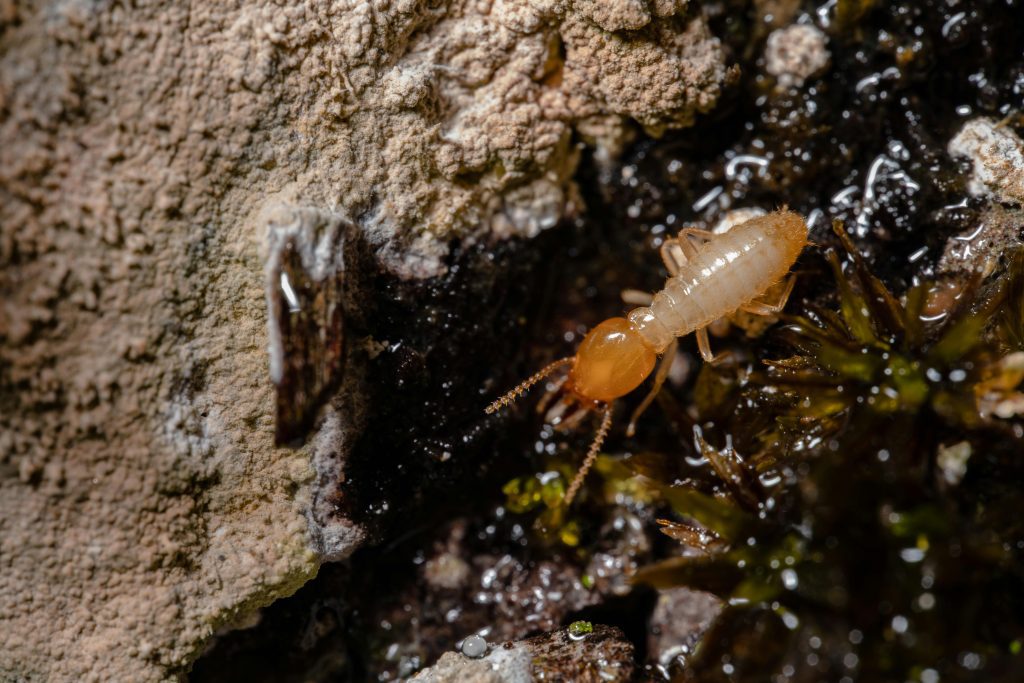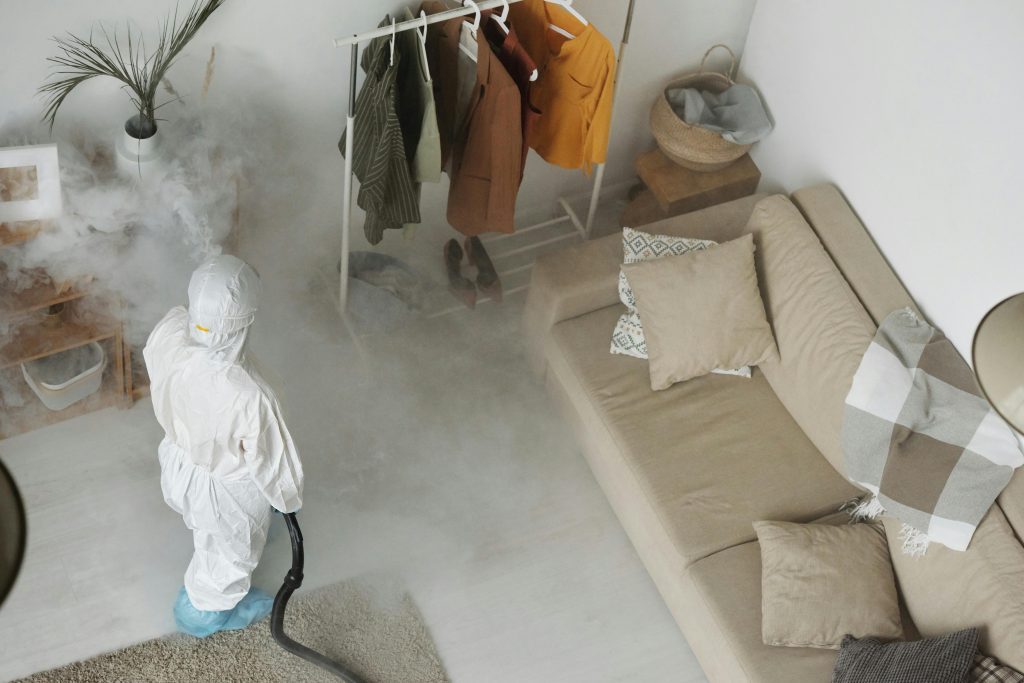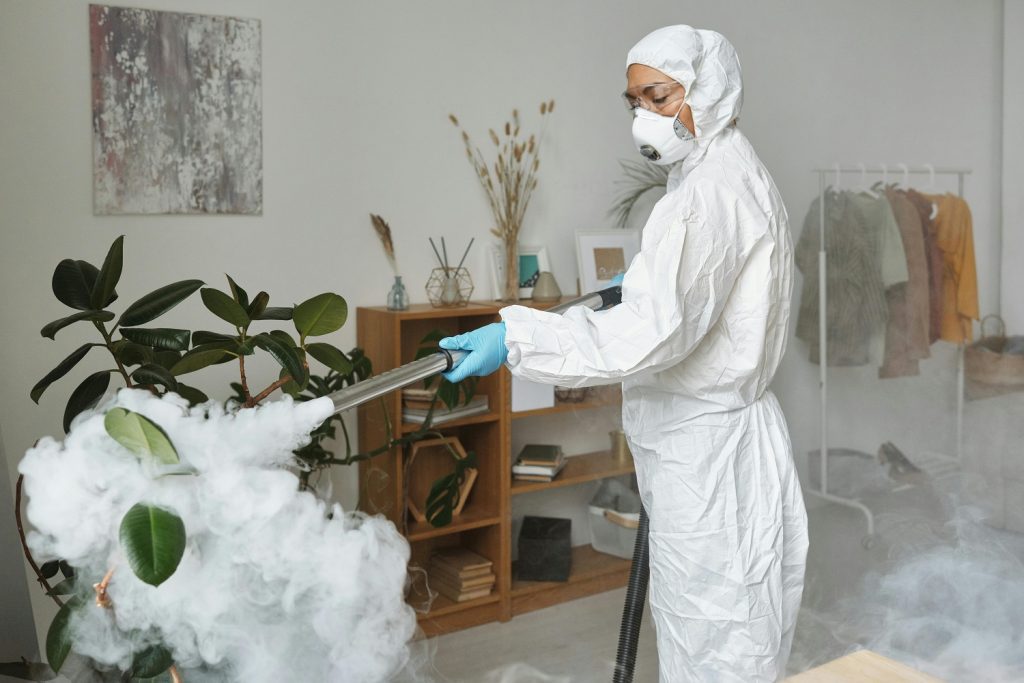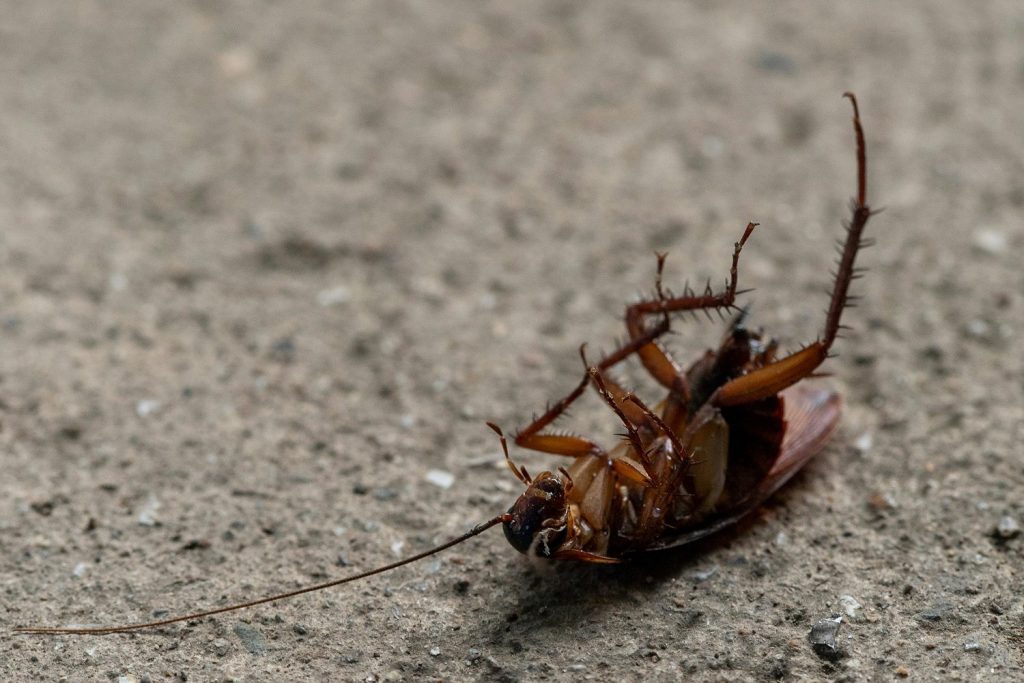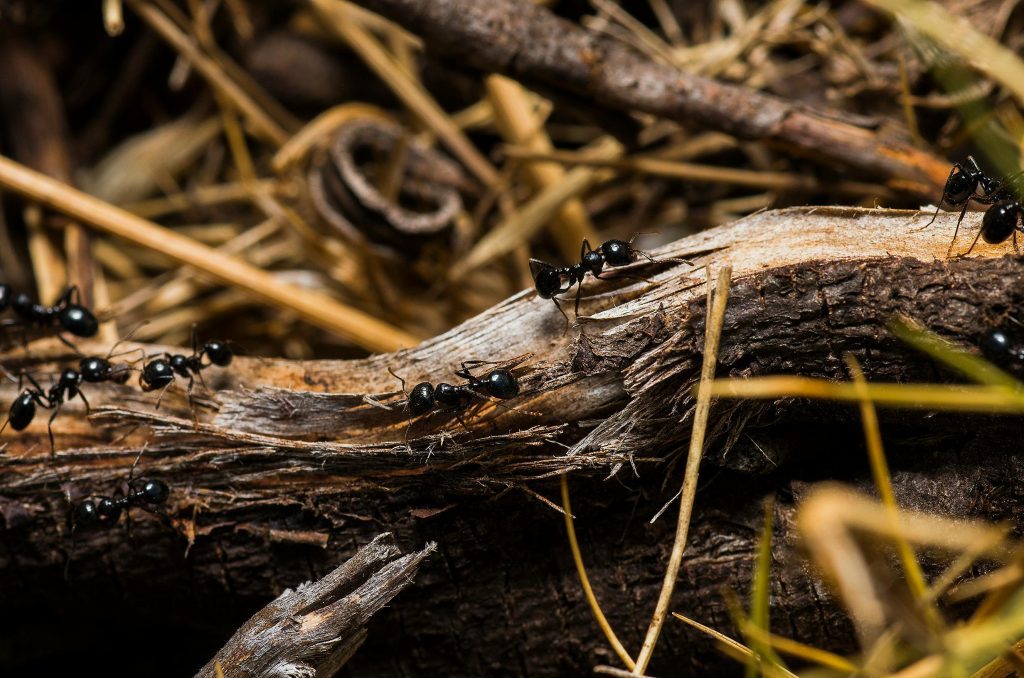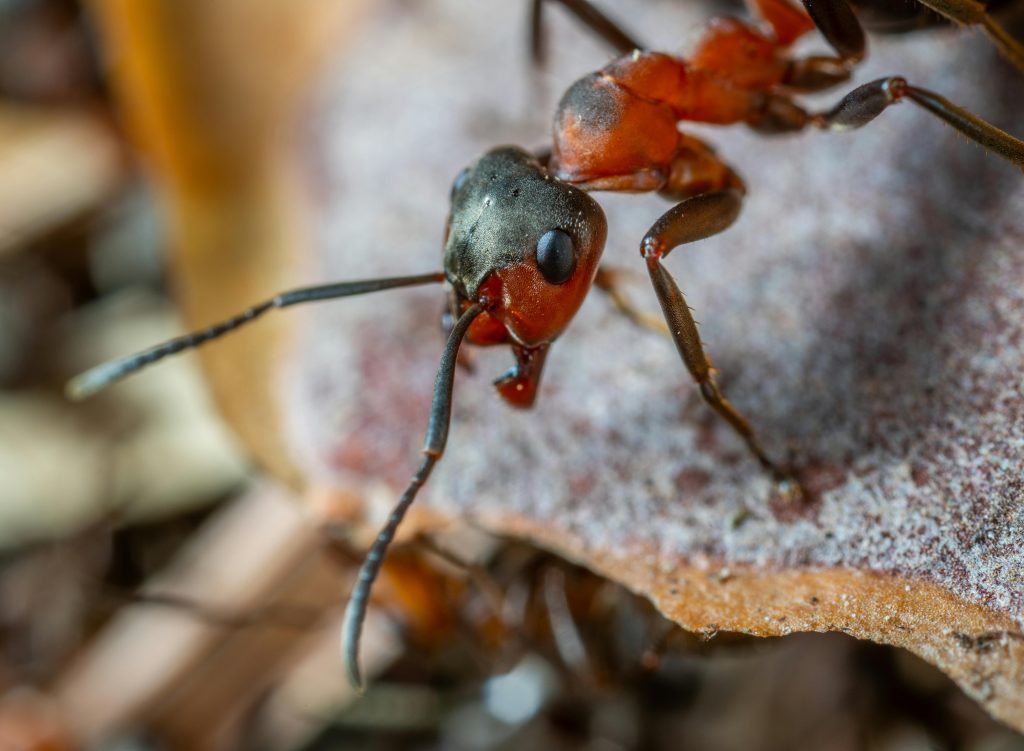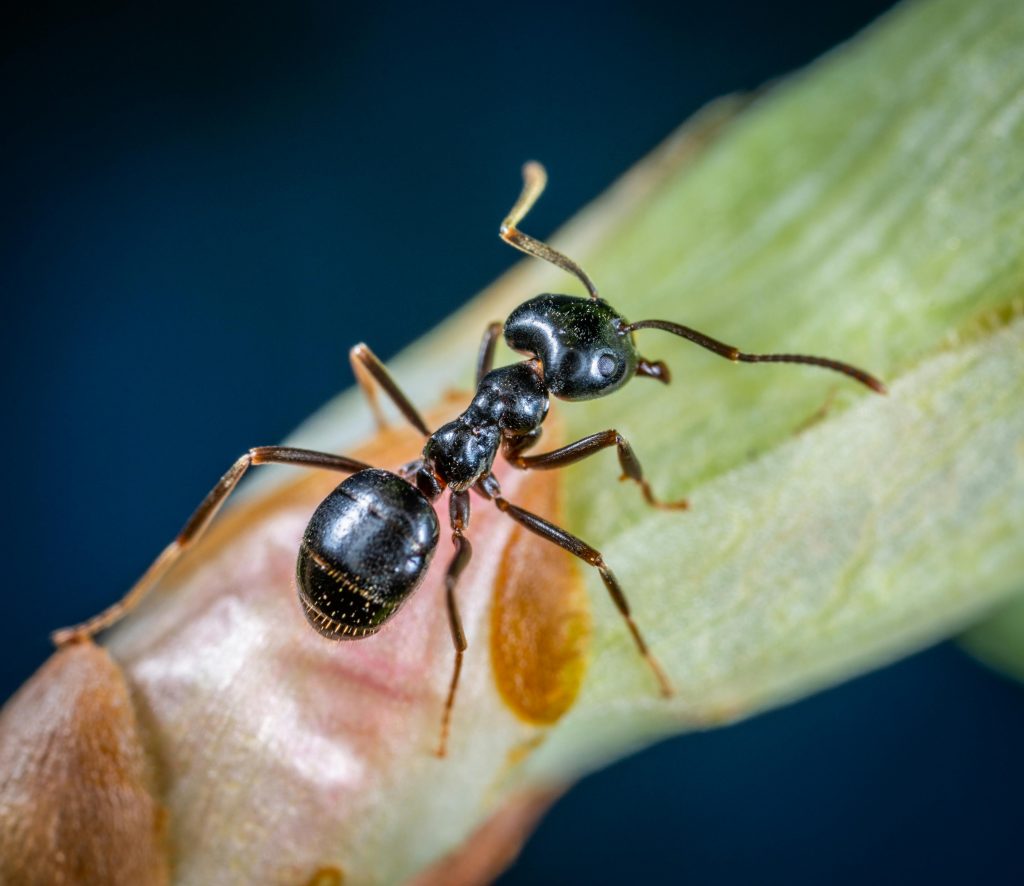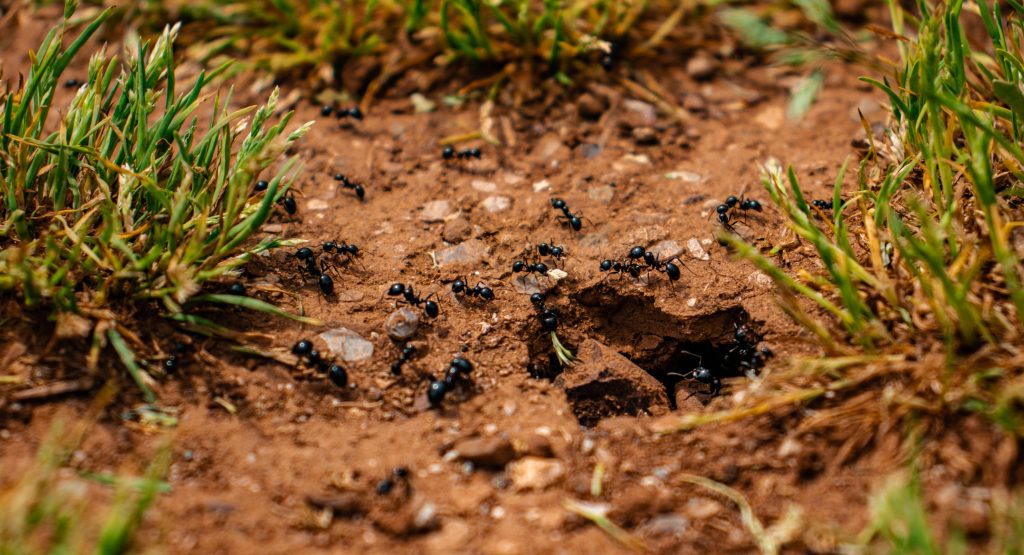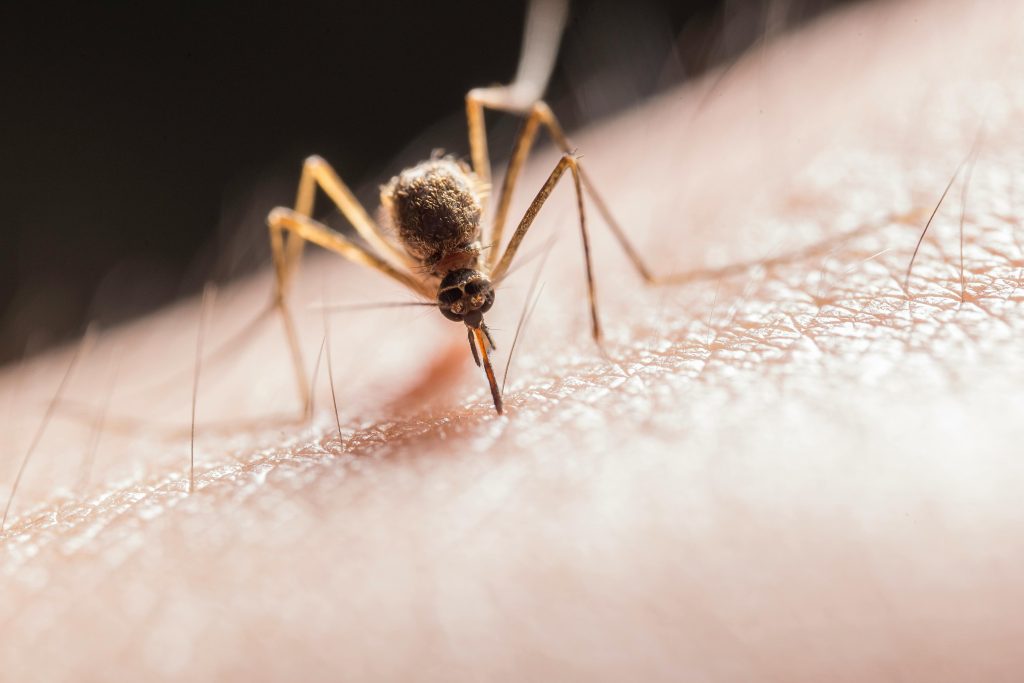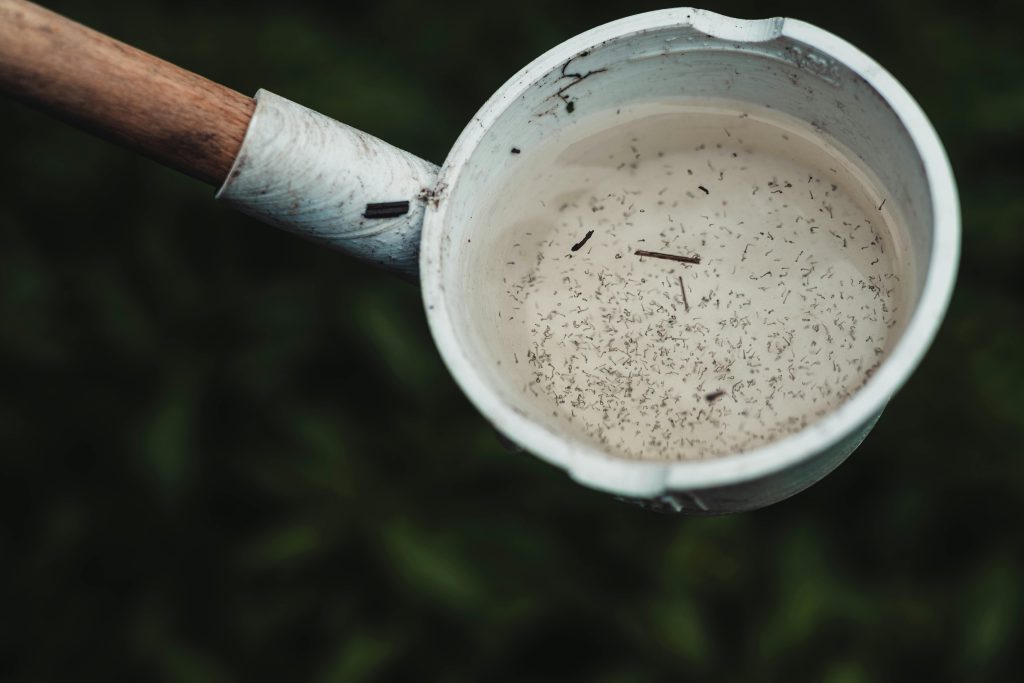3 Common Types of Termites Every Home and Business Owner Should Know About
Termites, often referred to as “silent destroyers,” are among the most damaging pests to homes and businesses. Their destructive capabilities are well-documented, and their infestations can lead to significant property damage, costly repairs, and disruption to daily life. As a homeowner or business owner, understanding the types of termites that may invade your property is critical in safeguarding your investment. In this article, we’ll explore three common types of termites in Singapore that every property owner should know about. We’ll also provide helpful tips on how to protect your property and how professional pest control services can assist in eradicating these pests.
Understanding Termite Behavior
Before diving into the specifics of different termite species, it’s essential to understand the general behavior of termites. These insects feed primarily on cellulose, a substance found in wood and plant matter. Their diet means they are typically drawn to wooden structures, including furniture, beams, and support posts in your home or office.
Termites live in colonies and have a complex social structure, which includes a termite king and queen, workers, soldiers, and swarmers. Each caste has a specific role to play:
- Worker termites are the most common and do the actual feeding, tunneling, and building.
- Soldier termites protect the colony from predators.
- Swarmers (flying termites) are responsible for reproduction and establishing new colonies.
Due to their highly organized system, termites can cause extensive damage before their presence is even noticed. This makes professional termite control an essential investment to ensure your property remains safe.
1. Subterranean Termites
Subterranean termites are the most common type of termites in Singapore and are responsible for a majority of infestations in both residential and commercial properties. As their name implies, they live underground in soil, where they maintain constant contact with moisture. Subterranean termites are especially dangerous because of their ability to build mud tubes, which they use to travel between their nests and food sources.
Key Characteristics:
- Mud tubes: These pests construct mud tunnels that run from the soil to wooden structures above ground.
- Moisture dependence: They need moisture to survive, which is why they often invade areas with high humidity or moisture.
- Destructive: These termites can weaken the structural integrity of your property by feeding on wooden beams, furniture, and more.
Signs of Infestation:
- Mud tubes along the foundation of your building or in wall cavities.
- Swarming termites, especially around light fixtures or windows.
- Hollow or damaged wood, which may have a soft, spongy texture.
If you suspect a subterranean termite infestation, it’s important to act quickly. Contact Conquer Pest for a thorough inspection and termite treatment plan tailored to your property.
2. Drywood Termites
Unlike subterranean termites, drywood termites do not require contact with the soil for survival. These termites live entirely within the wood they infest, making them harder to detect until significant damage has been done. Drywood termites are commonly found in wooden furniture, beams, and other dry wood sources, making them a serious concern for homeowners with wooden structures.
Key Characteristics:
- Wood-dwelling: Drywood termites create colonies within the wood they consume, which is often the most visible sign of infestation.
- Frass: They push out their droppings (frass) through small holes in the wood, often leaving small mounds that resemble salt or pepper.
- Silent damage: The damage caused by drywood termites can remain hidden inside walls and beams, making it harder to notice until it’s too late.
Signs of Infestation:
- Piles of frass near infested wooden areas.
- Tiny holes in wood structures, often near windows or doors.
- Visible damage inside wooden furniture, such as soft or hollowed-out spots.
Drywood termites are particularly concerning for homes with wooden furniture, cabinets, or structural elements. If you notice any of these signs, contact Conquer Pest to schedule a professional inspection.
3. Dampwood Termites
Dampwood termites thrive in high-moisture environments and are most commonly found in damp or rotting wood. They are less common than subterranean or drywood termites but can cause significant damage in properties with poor drainage, leaking pipes, or other moisture problems. These termites are particularly dangerous for homes with wooden structures near water sources, such as basements, attics, and garden fences.
Key Characteristics:
- Moisture-dependent: Dampwood termites require moist wood to survive and thrive in wet environments.
- Large colonies: These termites tend to form larger colonies than drywood termites, and their nests can be found in the ground or in decaying wood.
- No mud tubes: Unlike subterranean termites, dampwood termites do not build mud tubes; instead, they infest rotting wood directly.
Signs of Infestation:
- Wet, decaying wood with visible termite holes.
- Water damage to wooden beams, furniture, or structures.
- Unusual moisture accumulation around the building’s foundation or roof.
Dampwood termites are often found in areas with high humidity and moisture levels. Regular property maintenance, such as fixing leaks and improving drainage, can help reduce the risk of infestation. However, if you suspect dampwood termites are present, you should reach out to Conquer Pest for specialized treatment options.
How to Protect Your Property from Termites
While understanding the types of termites that may affect your property is essential, the next step is to implement preventive measures. Here are a few tips to help protect your home or business from termites:
1. Regular Inspections
Termite infestations can go undetected for months or even years. It’s crucial to schedule regular termite inspections to catch any signs of infestation early. Professional pest control specialists, such as those at Conquer Pest, use advanced tools and techniques to identify hidden termite activity.
2. Moisture Control
Termites are drawn to moisture. Ensure your property is dry by fixing any leaks in pipes, roof gutters, and around windows. Additionally, keep the foundation of your property clear of organic material like leaves and mulch, which can retain moisture.
3. Wood Treatment and Maintenance
Ensure that any wooden structures are treated with termite-resistant products. It’s also helpful to remove rotting or damp wood around your property, as termites are attracted to such environments.
4. Sealing Entry Points
Make sure that cracks and gaps around doors, windows, and the foundation are sealed to prevent termites from entering your property. Conquer Pest offers expert solutions for preventing termite entry through these vulnerable areas.
Why Choose Professional Termite Control?
While DIY termite treatments may seem appealing, they are often ineffective and can result in costly damage if left untreated. Professional termite control companies use specialized treatments to ensure that all termite species are eliminated from your property.
- Tailored Solutions: Pest control experts can recommend the best treatment methods, whether it’s termite baiting, chemical treatments, or fumigation.
- Preventive Measures: Professionals offer ongoing inspections and preventive advice to protect your property from future infestations.
- Expert Knowledge: Termite control requires specialized knowledge of termite behavior and the most effective eradication methods.
Conclusion
Termites are highly destructive pests that can cause significant damage to homes and businesses. Understanding the three most common types of termites—subterranean, drywood, and dampwood—can help you identify potential threats and take action before extensive damage occurs. Regular inspections, moisture control, and professional pest control solutions are essential to protect your property from termites. If you suspect a termite problem or want to learn more about preventive measures, Conquer Pest is here to help with effective and eco-friendly termite control solutions.
For more information or to schedule an inspection, visit our Pest Control page or contact us directly here.
Frequently Asked Questions (FAQs) About Termites
Top 8 Reasons You Should Hire Professional Pest Control Services in Singapore
When it comes to pest infestations, Singapore residents and businesses need fast, effective, and long-lasting solutions. Whether it’s termites, cockroaches, rodents, or mosquitoes, dealing with pests on your own can be frustrating and ineffective. Professional pest control services in Singapore, such as Conquer Pest, provide efficient treatments that ensure your problem is resolved swiftly and safely—while also preventing future outbreaks.
Here are the top 8 reasons why hiring professional pest control is essential for safeguarding your property:
1. Effective Pest Elimination
Professional pest control services use advanced tools and techniques to eliminate pests efficiently. DIY solutions often fall short in targeting the root cause of infestations.
- Specialized Treatments: Experts use chemical treatments, heat treatments, and baiting systems, choosing the best solution based on the pest type.
- Targeted Approach: Each pest species requires a specific treatment. For example, heat treatments are ideal for bed bugs, while baiting systems work wonders for cockroaches and rodents.
At Conquer Pest, we employ the most effective methods for your specific needs. Contact us today to schedule an inspection and let our specialists help you tackle the problem.
2. Prevent Future Infestations
Pest control is about more than just eliminating the current problem—it’s also about preventing future invasions.
- Identifying Entry Points: Our experts inspect your property for cracks and gaps that pests could use to enter.
- Ongoing Prevention: We advise on sealing these entry points and maintaining a dry, clean environment to reduce future risk.
With Conquer Pest’s proactive approach, you’ll have peace of mind knowing your property is protected long-term.
3. Health and Safety
Pests like rodents, cockroaches, and mosquitoes are not only a nuisance—they can also pose significant health risks. Rodents can spread diseases such as Hantavirus and salmonella, while cockroaches are known to trigger allergies and asthma.
- Disease Prevention: Cockroaches and rodents can contaminate food and surfaces, spreading bacteria and viruses.
- Allergy Control: Pests like dust mites and cockroaches are known to worsen asthma and allergies, particularly in children.
Hiring professionals ensures that harmful pests are removed, and the risk of disease transmission is minimized. At Conquer Pest, we use eco-friendly and safe solutions that prioritize the health and safety of your family or employees.
4. Cost-Effective Solutions
Attempting to solve pest problems on your own may lead to expensive mistakes in the long run. DIY treatments often fail, leading to further damage and higher repair costs.
- Preventing Structural Damage: Termites, for instance, can destroy the structure of your property. Professional treatment prevents this damage.
- Avoiding Contamination: Rodents and pests can contaminate food and belongings, which are costly to replace.
Let Conquer Pest save you money in the long run. By addressing the issue early, you avoid high repair and replacement costs.
5. Customized Solutions
No two infestations are the same. That’s why Conquer Pest offers tailored solutions for your specific needs.
- Property-Specific Treatments: Our experts assess your property and apply the most effective treatment methods.
- Personalized Advice: Based on the type of pest and layout of your property, we offer advice to keep pests at bay.
From small apartments to large commercial spaces, Conquer Pest has the experience to create the perfect plan for you.
6. Time-Saving
Dealing with pests can be time-consuming, especially when you’re unsure about how to approach the problem. Pest control professionals take the hassle out of the process by handling everything for you, from inspection to treatment and follow-up visits.
- Efficient Service: Pest control specialists have the knowledge and experience to identify issues quickly and apply the best treatment methods.
- Ongoing Support: Experts conduct follow-up inspections to ensure that the problem has been completely resolved.
Instead of spending hours researching DIY methods or applying ineffective solutions, trust Conquer Pest to take care of your pest control needs efficiently. Learn more about our specialists at work to see how we tackle pest issues with expertise.
7. Environmentally Friendly
As environmental concerns grow, many pest control companies are focusing on eco-friendly solutions. Professional pest control services use methods that minimize harm to the environment while ensuring effective pest eradication.
- Eco-Friendly Products: We use non-toxic, biodegradable pesticides that are safe for humans, pets, and the environment.
- Integrated Pest Management (IPM): IPM techniques focus on long-term prevention with minimal reliance on chemical treatments.
At Conquer Pest, we prioritize sustainability by using environmentally responsible pest control solutions. We believe in protecting both your home and the environment.
8. Peace of Mind
When you hire a professional pest control service, you gain peace of mind knowing that experts are taking care of the problem.
- Comprehensive Service: Our team handles everything, from inspection to treatment and follow-up.
- Ongoing Protection: We offer maintenance services to keep your property pest-free for the long haul.
With Conquer Pest, you can relax knowing that your home or business is in expert hands, free from the worry of pests.
Conclusion
Hiring professional pest control services in Singapore is the most effective way to address infestations while ensuring your property’s safety and comfort. With expertise in pest elimination, customized solutions, and eco-friendly practices, we are here to meet your needs—whether you’re dealing with a minor problem or a major infestation.
At Conquer Pest, we’ve been helping both residential and commercial properties for over 20 years. Our commitment to high-quality service means your pest problems will be solved quickly and safely.
Don’t wait for pests to cause irreversible damage. Contact Conquer Pest today, and let us handle all your pest control needs.
Frequently Asked Questions
1. Why should I hire a professional pest control service instead of handling it myself?
DIY pest control products often fail to eliminate the root cause of infestations, leading to recurring issues. Professionals like Conquer Pest use advanced methods and targeted treatments, ensuring pests are eradicated and future invasions are prevented.
2.How do I know if I need professional pest control services?
If you notice signs like droppings, nests, or visible pests, it’s time to call a professional. If DIY methods haven’t worked, or the infestation continues to grow, Conquer Pest can conduct a thorough inspection to determine the extent of the problem.
3. Is pest control safe for my family and pets?
Yes, our methods are eco-friendly and safe for humans and pets. We use low-toxicity, biodegradable pesticides and Integrated Pest Management (IPM) techniques to minimize chemical use.
4.How long does a pest control treatment take?
Treatment times vary based on the infestation’s severity. For minor issues, treatments may take just a few hours. Larger infestations may require more time and follow-up visits to ensure complete eradication.
5. How can I prevent future pest infestations?
After treatment, maintaining a clean, sealed environment is key. We offer tips on sealing cracks, keeping food stored properly, and regularly inspecting your property for pest signs to prevent future issues.
6. How much does professional pest control cost in Singapore?
Costs depend on factors such as the type of pest, the size of the property, and the severity of the infestation. DIY solutions might seem cheaper, but they often fail to address the root cause, leading to higher costs later. Contact Conquer Pest for a personalized quote.
What Happens After Cockroach Fumigation: A Guide to What You Can Expect
Cockroach infestations are not only unsettling but also a health hazard for homes and businesses. These pests multiply rapidly, contaminate food, and spread diseases. When infestations become severe, fumigation is often the most effective solution. But what happens after cockroach fumigation? Understanding the aftermath is crucial for ensuring the treatment’s effectiveness and preventing reinfestation.
This guide provides step-by-step advice on what to expect, actionable tips for post-treatment care, and expert insights to keep your property pest-free.
Is Fumigation Effective for Cockroach Infestations?
Fumigation is highly effective for addressing severe cockroach infestations. It works by penetrating deep into cracks, crevices, and other hiding spots where traditional sprays or baits fail. This method targets live cockroaches and often their eggs, ensuring widespread elimination.
Factors That Impact Fumigation Success
- Severity of the infestation: Larger infestations may require follow-up treatments.
- Quality of the treatment: Professional-grade chemicals and expertise play a critical role.
- Post-treatment actions: Homeowners must maintain cleanliness and block entry points to prevent reinfestation.
For reliable fumigation services, explore Conquer Pest’s cockroach fumigation solutions.
Do Roaches Get Worse After Fumigation?
It’s common to see increased cockroach activity immediately after fumigation. This happens because:
- The chemicals drive cockroaches out of their hiding spots.
- Some cockroaches may behave erratically before succumbing to the treatment.
This heightened activity is temporary and indicates that the fumigation is working. Within a week or two, their numbers will significantly decrease.
Why Do I Still See Cockroaches After Fumigation?
Even after professional fumigation, you might still spot cockroaches for several reasons:
1. Chemical Effects Take Time: Fumigants may take days or weeks to reach all cockroach hiding places.
2. Resistant Cockroach Eggs: Cockroach eggs are particularly resilient. They may hatch post-treatment, requiring follow-up actions.
3. Reinfestation from External Sources: Untreated neighboring areas can act as a source of reinfestation. Seal gaps and cracks to minimize this risk.
What Should You Expect After Cockroach Fumigation?
Here’s what typically happens after fumigation:
- Dead Cockroaches: You’ll find dead cockroaches in various parts of your property. Dispose of them promptly.
- Reduced Activity: Live cockroach sightings will decrease significantly over 1–2 weeks.
- Lingering Odors: The chemical smell from fumigation may persist temporarily. Ventilate the space to clear the air.
- Follow-Up Actions: Severe infestations often require additional treatments or inspections.
Post-Fumigation Steps to Take
To maximize the effectiveness of fumigation, follow these essential steps:
1. Follow Professional Instructions: Your pest control provider will give you specific guidelines for post-treatment care.
2. Wait Before Cleaning: Avoid cleaning treated areas for 24–48 hours to allow the chemicals to work fully.
3. Seal Entry Points: Use caulk or weather-stripping to seal cracks, gaps, and crevices around doors, windows, and plumbing.
4. Maintain Cleanliness:
- Remove crumbs and food debris regularly.
- Store food in airtight containers.
- Empty trash bins frequently.
5. Restrict Water Sources: Fix leaking pipes and avoid leaving standing water in sinks or bathrooms.
6. Schedule Follow-Ups: For severe infestations, follow-up treatments are often necessary. Contact Conquer Pest for advice.
What Not to Do After Cockroach Fumigation
Avoid these mistakes to ensure the treatment remains effective:
- Don’t Clean Immediately: Wait for the recommended time to avoid disrupting the chemical treatment.
- Don’t Block Ventilation: Keep windows and vents open to clear any residual fumes.
- Don’t Ignore Signs of Reinfestation: Act promptly if you notice new droppings, egg cases, or live cockroaches.
- Don’t Skip Follow-Ups: Follow-up treatments and inspections are key to long-term pest control.
How Soon Can You Clean After Cockroach Fumigation?
Timeline for Cleaning
- 24–48 Hours Post-Treatment: Avoid cleaning treated areas.
- Light Cleaning: Wipe high-contact surfaces like counters after the waiting period.
- Deep Cleaning: Perform deep cleaning, such as mopping floors, a week later or as advised by your pest control provider.
What If Cockroaches Persist After Treatment?
If cockroaches continue to appear after fumigation:
- Contact Your Exterminator: Report the issue for further evaluation.
- Inspect for Entry Points: Reinfestation often occurs through cracks or gaps in walls or windows.
- Schedule Follow-Up Treatments: Persistent infestations may require multiple treatments for complete eradication.
Learn more about pest control solutions here.
Preventing Future Cockroach Infestations
Maintaining a cockroach-free environment requires ongoing vigilance. Here’s how you can prevent future infestations:
- Regular Inspections: Look for droppings, egg cases, or other signs of activity.
- Professional Services: Schedule routine pest control visits to catch small issues before they escalate.
- Educate Yourself: Stay informed about cockroach behavior and prevention strategies.
Explore pest prevention tips here.
Conclusion
Fumigation is a powerful tool for eliminating cockroach infestations, but the aftermath requires careful attention to ensure lasting results. By understanding what to expect, following professional advice, and taking proactive steps, you can maintain a pest-free property.
If you’re dealing with a cockroach problem or need expert guidance, contact Conquer Pest today.
Enjoy peace of mind knowing your home or business is safe, clean, and free from cockroaches!
Frequently Asked Questions
Q: How long will cockroaches remain visible after fumigation?
Cockroaches may be visible for up to two weeks as the chemicals take effect.
Q: Can fumigation eliminate cockroach eggs?
While fumigation can affect some eggs, others may hatch post-treatment, requiring follow-ups.
Q: Are there alternatives to fumigation for cockroach control?
Yes, methods like baiting, trapping, and targeted spraying can be effective for smaller infestations.
Q: Is it safe to stay at home during cockroach fumigation?
Most fumigation treatments require you to vacate the premises for several hours or even a day, depending on the chemicals used. Always follow the exterminator’s guidelines for re-entry to ensure your safety.
Q: Can I use DIY fumigation products instead of hiring professionals?
DIY products may work for small infestations but are typically less effective for severe cases. Professional fumigation ensures thorough treatment with specialized chemicals that target hidden cockroach populations and eggs.
Q: Why is it important to seal cracks and gaps after fumigation?
Cockroaches can enter your property through tiny openings in walls, floors, and plumbing. Sealing these entry points prevents reinfestation and enhances the long-term success of the treatment.
Q: How can I protect my food and belongings during fumigation?
Before fumigation, store all food items in airtight containers or remove them from the premises. Cover or remove sensitive items like electronics, plants, and pet supplies as directed by your exterminator.
Q: Are the chemicals used in fumigation harmful to pets?
Yes, fumigation chemicals can be harmful to pets. Always remove pets, including aquariums and cages, from the premises before treatment. Wait for the recommended re-entry time to ensure safety.
Q: What should I do if cockroach eggs hatch after fumigation?
Cockroach eggs are resistant to many treatments and may hatch after fumigation. Contact your exterminator to schedule a follow-up treatment and clean your home thoroughly to remove newly hatched cockroaches.
Q: Can cockroaches return after fumigation?
Yes, cockroaches can return if neighboring infestations are not addressed or if entry points remain unsealed. Maintaining cleanliness and scheduling routine inspections are key to preventing their return.
Q: How do I know if fumigation was successful?
Signs of a successful fumigation include finding dead cockroaches, reduced sightings of live cockroaches over time, and no signs of droppings or egg casings. Persistent issues may indicate the need for additional treatments.
Q: What is the best long-term strategy for cockroach prevention?
The best long-term strategies include:
- Sealing entry points.
- Maintaining a clean environment free of food crumbs and standing water.
- Scheduling routine pest control services.
Most Common Ant Species in Singapore: Identification, Prevention, and Control Tips
Introduction
Ants are among the most common pests found in Singapore’s residential and commercial spaces. With Singapore’s warm, humid climate, ants thrive year-round, making ant infestations a frequent issue for property owners. Given the risks of contamination, structural damage, and rapid spread, identifying ant species and taking early control measures is essential.
This article explores the most common ant species in Singapore, detailing their characteristics, habits, and the best strategies for preventing and managing infestations. Understanding these details will help property owners protect their spaces more effectively and reduce the need for costly pest control interventions.
Why Ant Infestations Are Common in Singapore
Singapore’s tropical climate, marked by warmth and high humidity, provides ideal conditions for ants to flourish. Additionally, the country’s busy trade environment has led to the unintentional import of various foreign ant species, further contributing to the local diversity of ant types.
- Climate Factor: Singapore’s climate creates an environment where ants can thrive year-round. Moisture and warmth, in particular, attract ants and encourage rapid population growth.
- Trade and Imported Goods: Increased trade activity has brought foreign species into Singapore, adding to the already high number of native ant types. This constant influx raises the likelihood of new infestations.
- Adaptability: Many ant species can survive in both residential and commercial properties, especially those with access to food and water sources. Ants are highly adaptable, which makes managing their spread more challenging.
Signs of an Ant Infestation
Early detection of an ant infestation can prevent a small issue from turning into a major problem. Property owners should look out for the following signs:
- Presence of Ant Trails: Ants often travel in trails, moving back and forth from their nests to food sources. Seeing a line of ants in kitchens, pantries, or other areas with food is a clear indicator of an infestation.
- Nesting Sites: Ants often nest in moist, hidden places such as wall crevices, under sinks, behind appliances, or inside wooden structures. Spotting a nest or discarded wings could mean there’s a colony nearby.
- Damage to Wooden Structures: While ants don’t eat wood like termites, some species, such as carpenter ants, hollow out wood to build their nests. This can lead to structural issues over time.
Identifying an infestation early allows property owners to address the problem effectively, either through DIY methods or by contacting pest control professionals.
1. Ghost Ants (Tapinoma melanocephalum)
Ghost ants, also known as “sugar ants,” are one of the most common ant species in Singapore, and they are a leading cause of household infestations. These ants prefer moist environments, often making their nests in kitchens, bathrooms, and other damp areas. Ghost ants are highly attracted to sweet foods, as carbohydrates are essential to their diet.
Key Characteristics of Ghost Ants:
- Physical Appearance: Ghost ants are tiny, measuring between 1.3 to 1.5 mm in length. They have dark heads with pale, translucent bodies, making them easy to identify.
- Behavior: They typically move in trails and are known to nest in cabinets, under sinks, and even inside wall cavities.
- Diet: Ghost ants are attracted to sweet foods and liquids and are often found near sugar sources or food storage areas.
Challenges in Controlling Ghost Ants: Ghost ants can multiply quickly, and because of their size and mobility, they are challenging to eradicate without professional pest control methods. They tend to scatter when disturbed, making it difficult to fully eliminate them without a targeted approach.
2. Odorous House Ants (Tapinoma sessile)
Odorous house ants, another common ant species in Singapore, get their name from the distinct, coconut-like smell they release when crushed. These ants prefer moist areas, especially during dry spells, and are commonly found near sources of food, such as kitchens, pet food dishes, and indoor plants.
Key Characteristics of Odorous House Ants:
- Physical Appearance: They are generally brown or black and measure between 1.6 to 3.1 mm in length. Their antennae have 12 segments, making them distinct from other ants.
- Behavior: Odorous house ants are highly adaptable and can nest in various areas, including toilet lids, flowerpots, and other damp environments.
- Diet: They consume a wide range of foods, from sweet foods like fruits to oily or protein-based items, and will even eat pet food.
Impact on Property Owners: These ants can spread quickly within properties, especially if there is abundant food and water. They may contaminate food and surfaces, posing a hygiene concern for homes and businesses.
3. Pharaoh Ants (Monomorium pharaonis)
Pharaoh ants are particularly notorious for their resilience and difficulty to control. Known for their ability to form multiple colonies, these ants can become a persistent issue in homes and businesses if not managed correctly. Pharaoh ants are known to bite when threatened and pose a greater challenge due to their nesting and breeding habits.
Key Characteristics of Pharaoh Ants:
- Physical Appearance: These ants are usually golden or light brown and measure about 2 mm in length. Pharaoh ants have multiple queens in a colony, with some queens living up to 12 years.
- Behavior: Pharaoh ants tend to scatter and establish new colonies when threatened, making them hard to eradicate completely.
- Diet: Pharaoh ants prefer oily and protein-rich foods, but they can consume a wide variety of substances, including dead insects.
Challenges in Control: Pharaoh ants require specific pest control methods. Traditional DIY pest control can often backfire by causing the ants to spread into new colonies. Professional pest management is typically recommended to effectively handle these pests due to their complex colony structure.
4. Carpenter Ants (Camponotus spp.)
Carpenter ants are one of the most recognizable ant species in Singapore, known for their wood-boring behavior. While they do not consume wood like termites, they excavate it to create nests, which can lead to structural damage over time. Carpenter ants thrive in moist, decaying wood, making them common in damp areas of properties.
Key Characteristics of Carpenter Ants:
- Physical Appearance: Carpenter ants are generally larger than other species, measuring between 15 to 17 mm in length. They are typically black or a reddish-brown color.
- Behavior: They prefer to nest in wood, especially in moist environments like kitchens, bathrooms, and basements.
- Diet: These ants are omnivores, feeding on dead insects and sweet substances like honeydew from other insects.
Potential for Structural Damage: Carpenter ants can weaken wooden structures over time. Their nests in wooden beams, furniture, or structural components can compromise the integrity of a building, making early detection and removal essential for property owners.
5. Crazy Ants (Paratrechina longicornis)
Crazy ants are named for their erratic, rapid movement patterns, which set them apart from other ant species. These ants are highly adaptable and are commonly found in various locations, from kitchens to outdoor spaces. Their adaptability, combined with their tendency to scatter when disturbed, makes them challenging to control.
Key Characteristics of Crazy Ants:
- Physical Appearance: Crazy ants are usually dark brown to black and measure around 2 to 3 mm in length. They have long legs and antennae, which make them highly mobile.
- Behavior: These ants are known for their “crazy” movement patterns and can quickly spread to new areas if disturbed.
- Diet: Crazy ants are omnivorous and feed on a wide variety of foods, though they are particularly attracted to sweets.
Difficulty in Control: Crazy ants can spread rapidly within a property, and traditional pest control methods can often cause them to scatter further. Targeted treatment by pest control professionals is usually required to eliminate them effectively.
Importance of Proper Identification for Ant Control
Correctly identifying the species of ant present in a property is crucial for effective ant pest control. Each ant species has unique behaviors, food preferences, and nesting habits that require different treatment approaches. Misidentifying an ant species can lead to ineffective control efforts, allowing the infestation to spread or worsen.
Reasons Why Proper Identification Matters:
- Different Control Methods: Some ants, like Pharaoh ants, tend to scatter and form new colonies when disturbed, making them harder to control with typical methods. Targeted solutions are needed for each species.
- Potential Health and Structural Risks: Certain ants, such as carpenter ants, pose a structural risk, while others, like Pharaoh ants, may bite if threatened. Identifying the species helps prioritize the correct response.
Avoiding Ineffective DIY Solutions: DIY pest control can sometimes backfire by worsening the infestation. Professional pest controllers can accurately identify ant species and apply effective treatments, preventing the infestation from spreading.
Methods to Prevent Ant Infestations
Preventing an ant infestation starts with keeping living spaces clean and reducing the factors that attract ants, such as food sources and moisture. Here are some effective preventive steps to reduce the risk of ant infestations:
- Proper Food Storage: Store food in sealed containers and avoid leaving food out overnight. Even crumbs or spills can attract ants.
- Cleanliness and Waste Management: Regularly clean kitchen surfaces, floors, and other areas where food is handled. Ensure that trash bins are covered and emptied frequently to prevent ants from gathering.
- Moisture Control: Repair any leaks and ensure that sinks, bathrooms, and other moist areas are well-ventilated. Many ant species are attracted to damp spaces.
- Seal Entry Points: Ants often enter through cracks, holes, or gaps in walls, doors, and windows. Sealing these entry points can help keep ants from entering.
By taking these measures, property owners can significantly reduce the likelihood of an infestation, protecting their homes and businesses from potential damage.
When to Seek Professional Help
While minor ant issues can sometimes be managed with DIY methods, persistent or large-scale infestations typically require professional intervention. Here are some signs that indicate it may be time to contact a pest control service:
- Repeated Infestations: If ants keep returning despite DIY efforts, a professional pest control company can provide targeted treatments that address the root cause.
- Presence of Multiple Colonies: Species like Pharaoh ants can establish multiple colonies, making DIY methods ineffective. Professionals have the knowledge and tools to eliminate these colonies effectively.
- Structural Damage: Signs of structural damage, such as hollowed-out wood, may indicate carpenter ants or other destructive species. Professional treatment can prevent further damage.
- Health and Safety Concerns: Ants that bite or spread bacteria can pose health risks, especially in commercial kitchens or hospitals. A licensed pest control team can handle infestations safely and effectively.
Professional pest control services in Singapore can also provide eco-friendly solutions to minimize environmental impact, which is an added benefit for those seeking sustainable pest management.
Environmental Impact of Pest Control
When it comes to ant control, considering the environmental impact is essential. Singapore’s biodiversity is unique, and using eco-friendly pest control methods can help protect local ecosystems from harm. Many professional pest control companies in Singapore now offer environmentally responsible solutions that minimize chemical use and prioritize non-toxic treatments.
Eco-Friendly Pest Control Options:
- Non-Toxic Baits and Traps: These methods target ants without harming other wildlife. Non-toxic baits are especially effective for species like Pharaoh ants and odorous house ants.
- Natural Repellents: Essential oils, vinegar, and other natural repellents are effective for deterring certain ant species while being safer for the environment.
- Integrated Pest Management (IPM): IPM combines multiple techniques, focusing on prevention, monitoring, and targeted treatment. This approach minimizes chemical use, making it a sustainable pest control choice.
Choosing eco-friendly pest management solutions not only helps control ant infestations effectively but also contributes to the conservation of Singapore’s natural habitats.
Conclusion
Ant infestations are a common issue for property owners in Singapore, where the warm, humid climate encourages ant populations to thrive. By identifying the most common ant species, such as ghost ants, odorous house ants, and carpenter ants, and understanding their habits, property owners can better prevent and manage infestations. Simple preventive steps, like maintaining cleanliness, sealing entry points, and reducing moisture, can go a long way in keeping ants out of homes and businesses.
In cases of persistent infestations or complex ant species like Pharaoh ants and carpenter ants, seeking help from professional pest control companies is recommended. By using eco-friendly pest control options, property owners can protect both their properties and the environment. Early action and knowledge of Singapore’s most common ant species are key to effectively managing ant issues.
Frequently Asked Questions (FAQs)
1. What attracts ants to Singaporean homes?
Ants are attracted to food, especially sugary and greasy items, and to moisture-rich areas like kitchens and bathrooms. They enter homes searching for these resources and can set up colonies nearby if conditions are favorable.
2. Are DIY pest control methods effective against ants?
DIY pest control methods can help reduce ant activity but are often less effective for complete extermination, especially for species like Pharaoh ants that spread quickly. For long-term control, professional treatment is recommended.
3. How do I know which type of ant is infesting my property?
Identifying ants based on their appearance, behavior, and nesting locations can help. Ghost ants have translucent bodies, Pharaoh ants are golden-brown, and carpenter ants are larger and prefer wood. Professional pest control providers can also assist with identification.
4. Do ants in Singapore pose health risks?
Certain ant species, such as Pharaoh ants, may carry bacteria or bite if threatened, posing minor health risks. However, the primary concern is contamination of food and surfaces, which can lead to hygiene issues.
5. What’s the best way to get rid of ants permanently?
The most effective approach combines prevention, like sealing entry points and keeping areas clean, with professional pest control for lasting results. Eco-friendly treatments are also available to minimize environmental impact.
The Ultimate Guide to Mosquito Prevention, Treatment, and Control in Singapore
Mosquitoes are more than just a nuisance in Singapore; they are a serious health risk due to the potential spread of diseases like dengue fever and Zika virus. With Singapore’s warm, tropical climate, mosquitoes thrive year-round, making prevention and control essential. This guide provides you with all the information you need for effective mosquito prevention, treatment, and control to help keep your family and home safe. For professional assistance, Conquer Pest offers comprehensive mosquito control solutions.
Types of Mosquitoes in Singapore
Singapore is home to several species of mosquitoes that pose health risks due to their role in transmitting diseases. The following are the key mosquito species in Singapore, each with unique characteristics and public health implications.
1.Aedes Aegypti
- Appearance: Black with distinctive white markings on its legs and a white lyre-shaped pattern on the upper thorax.
- Disease Transmission: Primarily responsible for the spread of dengue fever, Zika virus, and chikungunya.
- Habitat: Often breeds in urban areas, favoring man-made containers filled with stagnant water, such as flowerpots, buckets, and gutters.
- Activity: Primarily active during early morning and late afternoon, making them a prominent threat in residential and urban settings.
2. Aedes Albopictus (Asian Tiger Mosquito)
- Appearance: Recognizable by its black and white striped pattern, similar to the Aedes aegypti but typically larger in size.
- Disease Transmission: Known carrier of dengue, Zika, and chikungunya, though less efficient than Aedes aegypti in spreading these diseases.
- Habitat: Found in both rural and urban environments; commonly breeds in natural and artificial containers with stagnant water.
- Activity: Most active during daylight hours, particularly early in the morning and late afternoon.
3. Culex Quinquefasciatus (Southern House Mosquito)
- Appearance: Brownish in colour, without the black-and-white markings characteristic of Aedes mosquitoes.
- Disease Transmission: Known vector of West Nile virus, lymphatic filariasis, and Japanese encephalitis.
- Habitat: Prefers polluted or stagnant water, often found breeding in open drains, septic tanks, and other unclean water sources.
- Activity: Nocturnal, mainly active after dusk, posing a higher risk indoors and around homes in the evening.
4. Anopheles Sundaicus
- Appearance: Brownish and recognized by its unique resting angle of 45 degrees on surfaces.
- Disease Transmission: Primary malaria vector in Southeast Asia, although malaria cases in Singapore are relatively rare.
- Habitat: Often found in coastal or brackish water, such as swamps, mangroves, and fishponds.
- Activity: Active at night, which increases the risk of malaria transmission in areas where Anopheles mosquitoes are prevalent.
5. Anopheles Maculatus
- Appearance: Brownish in colour and similar in appearance to Anopheles sundaicus, with a unique 45-degree resting posture.
- Disease Transmission: Also capable of transmitting malaria, though less common in urban areas of Singapore.
- Habitat: Primarily breeds in clear water, such as streams, ponds, and rice paddies, and is more prevalent in rural regions.
- Activity: Active at night, mainly after dusk, and poses risks in areas with natural water sources.
By understanding the different mosquito species present in Singapore, residents can better identify and prevent potential health risks associated with each type. For comprehensive mosquito control, visit Conquer Pest’s mosquito control page for specialised treatment options against these mosquito species.
Signs of Mosquito Infestations
Mosquito infestations can develop quickly, especially after periods of rain or high humidity. Here are some signs to watch out for:
- Frequent Bites: If you’re noticing multiple bites, especially indoors, this could be a sign of infestation.
- Buzzing Sounds: Mosquitoes make a distinctive buzzing sound, which is often a clear indicator of their presence.
- Visible Larvae: Mosquito larvae, often called “wrigglers,” can be spotted in standing water, such as potted plant saucers or stagnant drains.
Regularly checking for these signs can help in detecting an infestation early.
Life Cycle and Biology
The mosquito life cycle comprises four stages: egg, larva, pupa, and adult.
- Egg: Female mosquitoes lay eggs in stagnant water. The eggs can remain viable for months if the conditions are not conducive for hatching.
- Larva: When the eggs hatch, they become larvae and live in water, feeding on microorganisms.
- Pupa: The larvae then develop into pupae, where they undergo transformation.
- Adult: After a few days, adult mosquitoes emerge, ready to feed and breed.
Understanding their life cycle helps in identifying key points where control measures can be most effective.
Medical Importance
Mosquitoes are not just irritating; they are also vectors for a variety of diseases in Singapore:
- Dengue Fever: Transmitted by the Aedes mosquito, dengue can cause severe flu-like symptoms, and in some cases, it can be fatal.
- Zika Virus: Also spread by Aedes mosquitoes, Zika can cause mild symptoms but poses risks to pregnant women due to the potential of birth defects.
- Chikungunya: This virus causes fever and severe joint pain and is spread by Aedes mosquitoes.
- Malaria: Although less common, Anopheles mosquitoes can transmit malaria, which is known to cause fever, chills, and severe complications if untreated.
Recognizing the health risks can help emphasize the importance of preventive and control measures. For those dealing with recurring mosquito problems, consider consulting a pest control expert for more targeted strategies.
Symptoms of Mosquito-Related Diseases
The symptoms of mosquito-borne diseases can vary, but here are some of the common indicators:
- Fever and Headache: Both dengue and chikungunya present with high fevers and throbbing headaches.
- Joint and Muscle Pain: Chikungunya and dengue can cause severe joint and muscle pain, often lasting weeks.
- Rash and Red Eyes: A red rash and conjunctivitis are common symptoms of Zika and dengue.
- Fatigue and Nausea: Many mosquito-borne illnesses come with symptoms of nausea, vomiting, and extreme fatigue.
If you experience these symptoms, especially after mosquito bites, seek medical attention promptly.
Ways to Prevent Mosquito Bites
Preventing bites is essential in reducing the risk of mosquito-borne illnesses. Here are some effective measures:
- Wear Long Sleeves and Pants: Covering skin minimizes the chance of bites, especially in high-risk areas.
- Use Mosquito Repellent: Apply a repellent with DEET, picaridin, or oil of lemon eucalyptus for best results.
- Install Window Screens: Use fine-mesh screens on windows and doors to prevent mosquitoes from entering your home.
- Sleep Under a Mosquito Net: Mosquito nets are particularly effective when sleeping, especially if you have open windows.
Preventive measures are crucial, particularly during the mosquito breeding season, which usually follows periods of heavy rain.
How to Prevent Mosquito Breeding In and Around Your Home
Mosquitoes breed in stagnant water, so eliminating these sources around your home is critical.
- Remove Standing Water: Empty flowerpot saucers, clear clogged drains, and remove any items that can collect water.
- Clean Roof Gutters: Ensure gutters are debris-free to prevent water from pooling.
- Cover Water Containers: Use covers on water storage containers to block mosquito access.
- Trim Vegetation: Dense shrubbery and tall grass provide hiding spots for mosquitoes.
By eliminating potential breeding grounds, you can significantly reduce the mosquito population near your home. For more guidance, you can find additional tips on mosquito prevention and pest control.
DIY Methods to Prevent and Get Rid of Mosquitoes
Several effective DIY methods can help in mosquito control at home:
- Use Natural Oils: Citronella, eucalyptus, and lavender oils are natural mosquito repellents. Apply them around your home or diffuse them.
- Set Up Fans: Mosquitoes are weak fliers, so using fans can help keep them at bay in outdoor seating areas.
- Install Yellow LED Lights: Mosquitoes are less attracted to yellow lights, making them a good alternative for outdoor lighting.
- Create Mosquito Traps: Homemade traps using sugar water and yeast can attract and trap mosquitoes effectively.
These simple methods can be quite effective in reducing the mosquito population indoors.
Professional Mosquito Treatment
For severe infestations or high-risk areas, professional mosquito control services are often necessary. Here’s what to expect from professional treatment, which you can explore further through Conquer Pest’s mosquito control services:
- Fogging: Professional fogging services release insecticide into the air to kill adult mosquitoes. This is particularly useful in outdoor spaces.
- Residual Spraying: This treatment involves applying insecticides on surfaces where mosquitoes are likely to rest, providing extended protection.
- Larvicide Treatment: Professionals use larvicides to treat standing water, killing mosquito larvae and preventing them from developing into adults.
- Ongoing Maintenance: Many companies offer regular mosquito control plans, including inspections and treatments tailored to your needs.
If you’re interested in professional treatment or need expert advice, don’t hesitate to contact Conquer Pest’s team for help.
Conclusion
Mosquito prevention and control are essential in Singapore due to the high risk of mosquito-borne diseases. By understanding mosquito biology, implementing preventive measures, and, if necessary, calling on professional pest control services, you can protect yourself and your family from mosquito bites and the diseases they carry.
FAQs
- How often should I inspect my home for mosquito breeding sites?
It’s best to check your home weekly, especially after rainfall, as mosquito eggs can hatch in a matter of days. - Are natural repellents as effective as chemical ones?
Natural repellents like citronella can help, but they are generally less effective than repellents containing DEET or picaridin. - What should I do if I have symptoms of a mosquito-borne illness?
Seek medical attention promptly, as timely treatment can help manage symptoms and reduce complications. - Can mosquitoes breed indoors?
Yes, mosquitoes can breed indoors in places like bathrooms and water containers, so it’s important to eliminate standing water inside your home too. - How long does professional mosquito treatment last?
Most treatments provide protection for about 1-2 months, but ongoing maintenance is recommended, especially during peak mosquito season.
For more insights and solutions, Conquer Pest offers a comprehensive approach to effective mosquito control in Singapore.
Don’t Let the Bed Bugs Bite: Identifying, Treating, and Preventing Infestations in Singapore
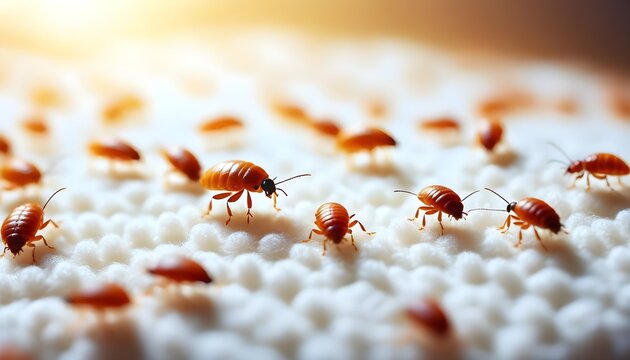
Bed bugs are a persistent problem in Singapore, and their bites can cause significant discomfort. While these tiny pests may not transmit diseases, they can quickly turn a peaceful night’s sleep into a nightmare. Bed bugs feed on human blood, and their infestations can spread rapidly if not addressed. Identifying, treating, and preventing bed bug infestations is crucial to maintaining a healthy and pest-free home. This guide will help you understand bed bugs and how to effectively handle an infestation with the help of a professional pest control service in Singapore.
What Are Bed Bugs and How Do They Infest?
Bed bugs are small, wingless insects that typically live in cracks and crevices around beds, furniture, and even walls. These pests are reddish-brown and can grow up to 5-7 millimeters long. Despite their small size, they are visible to the naked eye. Bed bugs are primarily nocturnal, feeding on the blood of humans and animals during the night. Their bites may not be immediately noticeable, but the symptoms usually appear hours or days later in the form of red, itchy welts.
In Singapore, bed bug infestations are becoming more common due to increased travel and densely populated living conditions. Bed bugs can hitch a ride on luggage, clothing, and furniture, quickly spreading from place to place. Once inside a home, they breed rapidly, with a single female bed bug laying up to 200-500 eggs in her lifetime.
Signs of Bed Bug Infestation
Early detection is key to controlling bed bug infestations before they get out of hand. Here are common signs of bed bugs to watch for:
- Bite Marks: Bed bug bites usually appear as small, red welts, often in a line or cluster. They are typically found on exposed areas of the skin, such as the arms, legs, neck, and face. These bites can be itchy and uncomfortable but are often mistaken for mosquito bites or allergic reactions.
- Bloodstains and Fecal Spots: After feeding, bed bugs may leave behind bloodstains on your bedding. You may also notice dark or rusty spots of bed bug excrement on sheets, mattresses, and nearby furniture.
- Shed Skins and Eggs: Bed bugs shed their exoskeletons as they grow. You may find these discarded skins, which resemble translucent bed bugs, along with tiny, white eggs around the edges of your mattress, box spring, or bed frame.
- Musty Odor: In larger infestations, bed bugs emit a sweet, musty odor similar to that of coriander. If you notice an unusual smell in your bedroom or other parts of your home, this could be a sign of an infestation.
Treating Bed Bug Infestations
Once a bed bug infestation is confirmed, it’s essential to act quickly to prevent it from spreading further. While some people may attempt DIY methods, such as over-the-counter insecticides or natural remedies, these are often ineffective in eliminating the entire infestation. The most reliable solution is to hire a pest control service in Singapore that specializes in bed bug extermination. Here’s what to expect during professional treatment:
1. Inspection and Identification
The first step in any effective pest control service is a thorough inspection of your home. Trained technicians will identify all areas of infestation, including hard-to-reach places such as cracks, electrical outlets, and behind wallpaper. Early identification ensures that the infestation is treated comprehensively and reduces the likelihood of the bed bugs returning.
2. Chemical Treatments
Professional pest control companies use specialized insecticides that are designed to kill bed bugs at all stages of their life cycle, including eggs. These chemicals are often applied to mattresses, bed frames, baseboards, and other areas where bed bugs are likely to hide. Pest control professionals have access to potent, safe products that aren’t available to the public, ensuring better results.
3. Heat Treatment
Another effective method for eliminating bed bugs is heat treatment. Bed bugs and their eggs cannot survive extreme temperatures. By raising the temperature of the infested area to at least 50°C, a pest control service can kill all bed bugs in just a few hours. Heat treatment is especially useful in large infestations and is a chemical-free option for homeowners concerned about pesticide use.
4. Follow-Up Visits
Because bed bugs are so persistent, it may take multiple treatments to completely eradicate the infestation. A professional bed bugs pest control Singapore service will schedule follow-up visits to ensure that the treatment is working and that no bed bugs remain.
Preventing Future Bed Bug Infestations
Once the infestation is under control, preventing bed bugs from returning is essential. Here are some tips to keep your home bed bug-free:
1. Inspect Secondhand Furniture
Bed bugs often hitch a ride into homes through secondhand furniture. Always inspect used items such as sofas, mattresses, and chairs for signs of bed bugs before bringing them into your home. Pay close attention to seams, tufts, and crevices where bed bugs might hide.
2. Be Cautious When Traveling
Bed bugs are notorious for spreading through travel. When staying in hotels, inspect the mattress and bedding for signs of bed bugs. Keep your luggage elevated off the floor and away from the bed. Once you return home, wash all clothing in hot water and inspect your luggage for any hitchhiking pests.
3. Declutter Your Home
Bed bugs thrive in cluttered environments where they can easily hide. Keeping your home clean and clutter-free reduces the number of hiding spots for bed bugs. Regular vacuuming, particularly in the bedroom, can also help remove bed bugs before they have a chance to infest.
4. Use Protective Covers
Consider encasing your mattress and box spring in a bed bug-proof cover. These covers trap bed bugs inside and prevent new ones from entering, reducing the likelihood of an infestation. Be sure to use covers that are specifically designed for bed bug prevention, as regular mattress covers will not be effective.
Why Professional Pest Control Is Essential
Bed bug infestations can be challenging to deal with on your own. Without professional help, the infestation may continue to spread, becoming more difficult and expensive to treat. Pest control Singapore professionals have the knowledge, experience, and tools needed to handle bed bug infestations effectively. They can tailor their approach based on the severity of the infestation and use proven methods to ensure complete eradication.
Additionally, working with a pest control service provides peace of mind. You can trust that the experts are using the best techniques to protect your home and prevent future infestations. With their help, you’ll be able to sleep soundly without worrying about bed bug bites.
FAQs
1. How Can I Tell If I Have Bed Bugs or Another Type of Pest?
Bed bug infestations can often be confused with other pests such as fleas or mites. The most reliable way to identify bed bugs is by looking for their specific signs, such as small red bites in a cluster, bloodstains on bedding, and dark fecal spots. If you’re unsure, a professional pest control service can help identify the pest accurately.
2. Is It Safe to Stay in My Home During Bed Bug Treatment?
Most chemical treatments used by pest control Singapore services are safe for residents. However, you may be advised to vacate the home for a few hours during and after treatment to allow the insecticide to dry. Heat treatments do not require chemicals and are considered completely safe for people and pets.
3. How Long Does It Take to Eliminate a Bed Bug Infestation?
The time it takes to eliminate a bed bug infestation depends on the size of the infestation and the treatment method used. In most cases, it can take several treatments over a few weeks to completely eradicate the pests. Your pest control professional will provide a customized plan and timeline for your specific situation.
4. What Should I Do After Bed Bug Treatment to Prevent Reinfestation?
After treatment, it’s essential to follow your pest control provider’s advice. This may include regular inspections, vacuuming, and using mattress covers. Be vigilant when traveling or purchasing used furniture to avoid bringing bed bugs back into your home.
Conclusion
Bed bug infestations can be distressing, but with the right approach, they can be effectively treated and prevented. Identifying the signs of bed bugs early, seeking professional bed bugs pest control Singapore services, and taking preventive measures are essential steps in maintaining a pest-free home. Whether through chemical treatments, heat treatments, or a combination of both, professional pest control is your best defense against bed bugs. By staying vigilant and following expert advice, you can keep your home safe and comfortable for you and your family.
Flight Plan: Effective Fly Pest Control Solutions for Singaporean Homes and Businesses
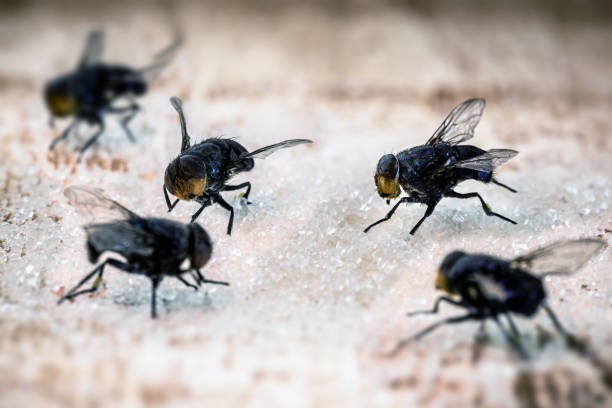
Flies are more than just a nuisance; they can pose significant health risks to both homes and businesses in Singapore. The tropical climate, high humidity, and dense population make it an ideal environment for flies to thrive. From spreading diseases to contaminating food, these pests can create a range of problems. Therefore, implementing effective fly pest control solutions is crucial for maintaining a clean and healthy environment. In this blog, we’ll explore the various types of flies found in Singapore, the dangers they pose, and the most effective pest control methods for keeping them at bay.
Common Types of Flies in Singapore
Before diving into fly control solutions, it’s essential to understand the types of flies that commonly invade homes and businesses in Singapore. Different species of flies have different behaviors, and identifying them correctly can help in choosing the most effective control methods.
1. Houseflies
Houseflies are the most common species found in both residential and commercial settings. They are attracted to decaying organic matter, such as food waste and garbage. These pests can spread harmful bacteria, including E. coli and Salmonella, by contaminating food and surfaces.
2. Fruit Flies
Fruit flies are attracted to ripened or fermenting fruits and vegetables. They are common in kitchens, restaurants, and supermarkets where fresh produce is stored. While they don’t pose the same health risks as houseflies, their presence can be unsettling, and they can contaminate food with bacteria.
3. Blow Flies
Blow flies are larger than houseflies and are known for their metallic appearance. They are often found around decaying meat or animal carcasses. While less common in homes, blow flies can still invade businesses like restaurants, butcher shops, and food processing plants.
4. Drain Flies
Drain flies thrive in moist environments and are often found near sinks, drains, and sewage systems. They are particularly common in areas with poor sanitation and can indicate an underlying plumbing or drainage issue.
Why Fly Control Is Important
Flies may seem like a minor inconvenience, but their impact on health and hygiene should not be underestimated. They are known vectors of various diseases, including food poisoning, dysentery, and cholera. Flies can easily transfer bacteria and pathogens from contaminated surfaces to food and kitchen utensils. This can result in serious health hazards, especially for businesses in the food industry, such as restaurants, cafes, and food processing plants.
For homes, flies can be a source of frustration and discomfort, especially when they multiply quickly during the warmer months. Without proper control measures, their presence can lead to food contamination, unpleasant odors, and an overall unsanitary environment.
In business settings, particularly those involving food handling or healthcare, a fly infestation can lead to regulatory penalties, a loss of reputation, and even temporary closures. Implementing an effective fly control strategy is not just about maintaining comfort; it’s about protecting health, ensuring compliance with hygiene regulations, and safeguarding your business reputation.
Preventive Measures for Fly Control
The best way to tackle a fly infestation is through preventive measures. By making your home or business less attractive to flies, you can significantly reduce the likelihood of an infestation. Below are some key steps you can take to prevent flies from becoming a problem.
1. Proper Waste Management
Flies are naturally drawn to decaying organic material, especially food waste. Ensure that garbage bins are tightly sealed, and waste is regularly disposed of. In businesses, particularly in the food and hospitality industries, frequent garbage collection and sanitation of waste areas are essential.
2. Maintain Cleanliness
Cleanliness is the foundation of effective fly control. Regularly clean and disinfect surfaces, especially in areas where food is prepared and consumed. For businesses, it’s important to maintain high standards of hygiene in kitchens, dining areas, and food storage rooms to prevent attracting flies.
3. Repair Plumbing Issues
Since some species, like drain flies, thrive in moist environments, fixing plumbing leaks or drainage problems can help eliminate potential breeding grounds. Ensure that drains are kept clean and free of debris that could encourage fly infestations.
4. Seal Entry Points
Flies can easily enter buildings through open doors, windows, and small cracks. Installing fly screens on windows and doors and sealing any gaps or cracks around the building can help keep flies out. Businesses should also ensure that loading areas and kitchen doors are kept closed or have fly control systems in place.
Fly Control Methods for Homes and Businesses
When preventive measures are not enough, it’s important to have an effective fly control solution in place. Below are some methods that have proven to be effective in managing and eliminating fly infestations in Singaporean homes and businesses.
1. Insecticides and Fly Sprays
Insecticides are one of the most common methods of controlling flies. For homes, over-the-counter fly sprays can provide temporary relief from small fly infestations. However, these should be used with caution, particularly around food preparation areas, as they contain chemicals that can be harmful if ingested.
For businesses, particularly those in the food industry, professional-grade insecticides are often more effective. These are typically applied by pest control experts and are designed to eliminate large-scale fly infestations. It’s important to choose insecticides that are safe for use in food-handling environments to avoid contamination.
2. Fly Traps
Fly traps are a non-toxic solution that can help control fly populations. There are various types of fly traps available, including sticky traps, electric fly killers, and bait traps. Sticky traps are ideal for indoor use in homes and businesses, as they capture flies without the use of chemicals.
Electric fly killers use ultraviolet light to attract flies and then eliminate them with an electric shock. These devices are particularly effective in commercial settings where large numbers of flies need to be controlled. However, they should be placed away from food preparation areas to prevent contamination.
3. Biological Control
Biological control involves using natural predators of flies to reduce their populations. This method is more commonly used in agricultural or outdoor settings but can also be applied in urban areas. Certain species of parasitic wasps are known to target and eliminate fly larvae, preventing them from reaching adulthood. While not as widely used as chemical methods, biological control can be an environmentally friendly option for managing fly populations.
4. Professional Pest Control Services
For severe infestations or businesses that require consistent pest management, professional pest control services are the most effective solution. Companies that specialize in pest control will conduct a thorough inspection of the premises, identify the type of fly infestation, and recommend a tailored treatment plan.
In Singapore, pest control services often use Integrated Pest Management (IPM) strategies, which combine various control methods to achieve long-term results. These strategies may include a combination of chemical treatments, fly traps, and preventive measures, ensuring that the fly problem is resolved and future infestations are prevented.
Maintaining Long-Term Fly Control
Once the immediate fly infestation has been dealt with, it’s crucial to implement long-term strategies to keep flies at bay. Regular cleaning, waste management, and fly-proofing measures should be a part of routine maintenance for both homes and businesses. In addition, scheduling regular pest inspections can help identify and address potential fly breeding grounds before they become a problem.
For businesses, particularly those in the food industry, staying compliant with local health regulations is vital. Regular pest control assessments and adherence to hygiene standards will not only keep your business fly-free but also protect your reputation and ensure customer satisfaction.
Final Thoughts: Fly Pest Control Solutions for Singapore
Flies are not just an inconvenience; they can pose serious health risks and lead to significant problems if left unchecked. Whether you’re a homeowner dealing with a minor fly issue or a business trying to prevent a large-scale infestation, effective fly control is essential for maintaining a clean and healthy environment.
By implementing preventive measures, using appropriate fly control methods, and working with a professional pest control service, you can ensure your home or business remains fly-free. For reliable and effective pest control solutions, visit us at Conquer Pest Management Singapore.
Beyond Sprays: Advanced Cockroach Pest Control Methods for Long-Term Results in Singapore
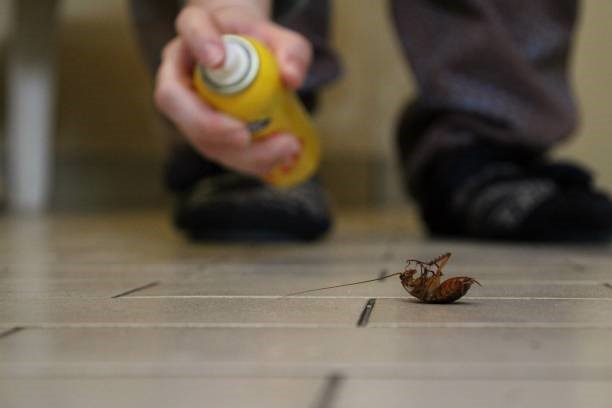
Cockroaches are notorious pests that can invade homes and businesses, creating not only a nuisance but also potential health hazards. While traditional spray methods may offer a temporary solution, they often fail to address the root causes of infestations. In Singapore, where humidity and warmth create an ideal environment for these resilient creatures, advanced cockroach pest control methods are essential for achieving long-term results. This article explores innovative approaches to cockroach management, ensuring your space remains pest-free.
Understanding Cockroach Behavior
Before diving into advanced pest control methods, it’s important to understand the behavior of cockroaches. These resilient insects thrive in warm, moist environments and are often found in kitchens, bathrooms, and other areas where food and moisture are readily available. They are nocturnal creatures, primarily active at night, which makes them difficult to detect during the day.
Cockroaches are not just a nuisance; they can pose significant health risks. They are known to carry allergens and pathogens that can lead to respiratory issues and food contamination. This underscores the importance of effective pest control measures that go beyond basic sprays.
Signs of a Cockroach Infestation
Detecting a cockroach infestation early can significantly aid in effective pest control. Here are some common signs to look out for:
- Droppings: Small, dark droppings resembling pepper or coffee grounds are often found in areas where cockroaches frequent.
- Egg Cases: Cockroach egg cases, known as oothecae, are brown and oval-shaped. Finding these in hidden areas is a strong indication of an infestation.
- Odor: A musty or oily odor in your home can suggest a cockroach problem, as they produce pheromones that may lead to unpleasant smells.
- Shed Skin: As cockroaches grow, they shed their exoskeletons. Finding these skins can signal an active infestation.
If you notice any of these signs, it’s crucial to take action immediately to prevent further escalation.
Advanced Cockroach Pest Control Methods
1. Integrated Pest Management (IPM)
Integrated Pest Management (IPM) is a comprehensive approach that combines various strategies to control pest populations effectively. This method focuses on prevention, monitoring, and control, considering the life cycle and behavior of cockroaches.
Key Components of IPM:
- Prevention: This involves identifying and eliminating food, water, and shelter sources for cockroaches. Sealing cracks, fixing leaks, and removing food debris are essential steps.
- Monitoring: Regular inspections can help detect cockroach activity and assess the effectiveness of control measures. Using cockroach monitoring devices can aid in tracking their movement.
- Control Methods: If an infestation is detected, IPM employs a combination of methods, including baits, traps, and, if necessary, targeted sprays that are less harmful to the environment.
By focusing on long-term solutions rather than quick fixes, IPM aims to minimize the reliance on chemical treatments and reduce the risk of resistance development in cockroach populations.
2. Baiting Systems
Baiting systems are an effective alternative to traditional sprays, as they attract cockroaches to consume a toxic substance. This method not only targets the visible cockroaches but also those that may be hiding in inaccessible areas.
How Baiting Works:
- Attractants: Baits contain food substances that attract cockroaches. Once they consume the bait, the active ingredient disrupts their biological functions, leading to death.
- Transfer Effect: Cockroaches that consume the bait may return to their nests, where they can spread the toxin to other members of their colony. This transfer effect is crucial in reducing the overall population.
Baiting systems are particularly effective for managing cockroach populations over the long term, as they target the entire colony rather than just the visible individuals.
3. Gel Insecticides
Gel insecticides have gained popularity as an advanced cockroach control method due to their targeted application and effectiveness. These gels are formulated to attract cockroaches while containing potent insecticides that eliminate them upon consumption.
Advantages of Gel Insecticides:
- Targeted Application: Gel can be applied in hard-to-reach areas where sprays may not be effective. This allows for precise targeting of infestations.
- Low Toxicity: Many gel formulations have lower toxicity levels compared to traditional sprays, making them safer for use in homes with children and pets.
- Residual Action: Some gel insecticides have residual effects, meaning they can continue to kill cockroaches even after the initial application.
Gel insecticides are often used in conjunction with baiting systems for a comprehensive pest control strategy.
4. Insect Growth Regulators (IGRs)
Insect Growth Regulators (IGRs) are chemicals that disrupt the life cycle of cockroaches. By inhibiting their growth and reproduction, IGRs help control pest populations over time.
How IGRs Work:
- Disruption of Development: IGRs prevent cockroaches from maturing into adults or reproducing, effectively reducing their population over time.
- Long-Term Solution: Unlike traditional insecticides that kill only adult cockroaches, IGRs target the entire life cycle, making them a valuable addition to pest management programs.
Incorporating IGRs into your pest control strategy can enhance the effectiveness of other methods, leading to long-term results.
5. Professional Pest Control Services
While DIY methods can be effective, sometimes a professional pest control service is necessary for severe infestations. Professional pest control companies, such as Conquer Pest Singapore, have access to advanced technologies and treatments that are not available to the general public.
Benefits of Professional Services:
- Expertise: Pest control professionals are trained to identify the specific species of cockroaches and assess the extent of the infestation, allowing them to tailor their approach accordingly.
- Access to Advanced Tools: Professionals use advanced tools and methods, such as thermal imaging and moisture detection, to identify hidden infestations and areas conducive to pest activity.
- Long-Term Maintenance: Many pest control services offer ongoing maintenance plans to ensure that your property remains cockroach-free. Regular inspections and treatments can prevent future infestations.
6. Natural Pest Control Solutions
For those seeking eco-friendly options, several natural pest control methods can help manage cockroach populations. While these methods may not be as immediately effective as chemical treatments, they can be part of an integrated pest management strategy.
Natural Methods Include:
- Diatomaceous Earth: This natural powder can be sprinkled in areas where cockroaches are active. It works by dehydrating the insects upon contact, effectively reducing their numbers.
- Essential Oils: Certain essential oils, such as peppermint and tea tree oil, are known to repel cockroaches. Mixing these oils with water and spraying them in infested areas can deter cockroach activity.
- Borax: A common household product, borax can be mixed with sugar to attract cockroaches. When consumed, it disrupts their digestive systems, leading to death.
While natural solutions may require more time and effort, they can be effective in conjunction with other methods.
Conclusion
Cockroach infestations can be a significant challenge for homeowners and businesses in Singapore. However, by moving beyond traditional spray methods and adopting advanced pest control techniques, it is possible to achieve long-term results. From Integrated Pest Management to professional services and natural solutions, a comprehensive approach can effectively manage and eliminate cockroach populations.
At Conquer Pest Singapore, we are dedicated to providing effective and environmentally friendly pest control solutions tailored to your needs. Our team of experts utilizes the latest methods and technologies to ensure your space remains cockroach-free. If you’re dealing with a cockroach problem, contact us today for a consultation and take the first step towards a pest-free env
Combating Mosquito Menace: Effective Pest Control Strategies for Singaporean Homes
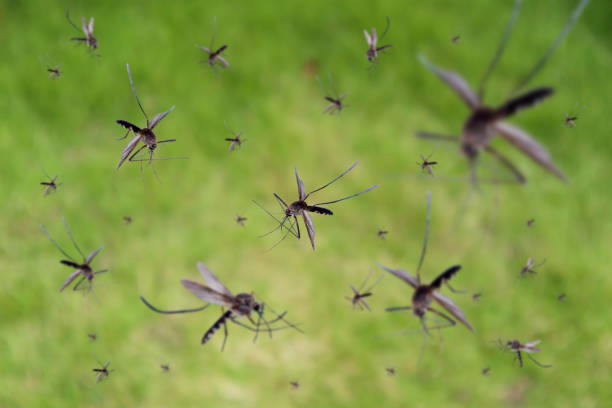
Mosquitoes are more than just a nuisance; they are a significant health risk, especially in tropical climates like Singapore. With the warm, humid weather, these tiny pests thrive, potentially spreading diseases like dengue fever and Zika virus. For homeowners in Singapore, tackling the mosquito menace requires a multi-faceted approach. In this article, we will explore effective pest control strategies to help you create a mosquito-free environment in your home.
Understanding the Mosquito Problem in Singapore
Singapore’s tropical climate provides an ideal breeding ground for mosquitoes. The most common mosquito species in Singapore include the Aedes and Culex mosquitoes. These mosquitoes are not just annoying; they can transmit serious illnesses. Aedes mosquitoes, for instance, are known vectors for dengue fever, a disease that can cause severe flu-like symptoms and, in extreme cases, lead to dengue hemorrhagic fever.
Mosquitoes breed in stagnant water, making any container or pool of water around your home a potential breeding site. This includes bird baths, flower pots, and even the trays under potted plants. Understanding these breeding habits is crucial for implementing effective control measures.
Preventative Measures to Minimize Mosquito Breeding
Eliminating Standing Water
The most effective way to combat mosquitoes is to eliminate their breeding grounds. Mosquitoes lay their eggs in stagnant water, so removing or managing any sources of standing water around your home can significantly reduce their numbers. Regularly check areas where water may accumulate, such as:
- Flower Pots: Ensure that pots have proper drainage or empty any standing water.
- Gutters: Clean gutters regularly to prevent water buildup.
- Air-Conditioning Units: Check for any water collection in and around air-conditioning units and drain it.
Regular Maintenance
Maintaining a clean and dry environment around your home is essential for mosquito control. This involves:
- Cleaning Outdoor Spaces: Regularly clean and remove debris from outdoor areas where water may collect.
- Checking Breeding Sites: Frequently inspect and clear potential breeding sites, including garden ponds and unused containers.
By taking these preventative measures, you reduce the likelihood of mosquitoes finding suitable places to lay their eggs, thereby controlling their population around your home.
Indoor Strategies to Combat Mosquitoes
Using Mosquito Nets and Screens
To keep mosquitoes out of your home, installing mosquito nets and screens on windows and doors is a highly effective strategy. These barriers prevent mosquitoes from entering while allowing fresh air to circulate. Ensure that screens are well-fitted and free from holes to maximize their effectiveness.
Repellents and Insecticides
Mosquito repellents and insecticides play a crucial role in indoor mosquito control. There are various types available, including:
- Repellents: These come in the form of sprays, lotions, and coils. Choose repellents with DEET, picaridin, or oil of lemon eucalyptus, as these are effective against mosquitoes.
- Insecticides: Indoor insecticides can help eliminate mosquitoes inside your home. Ensure that you follow the instructions carefully and use these products in well-ventilated areas.
When using these products, always prioritize safety and avoid overuse. Opt for natural or less toxic options when possible, especially if you have young children or pets.
Indoor Plants
Certain plants are known for their mosquito-repellent properties. Incorporating these plants into your indoor decor can help keep mosquitoes at bay. Some effective mosquito-repellent plants include:
- Citronella: Known for its strong scent that mosquitoes dislike.
- Lavender: The scent of lavender is soothing to humans but repellent to mosquitoes.
Growing these plants indoors not only enhances your home’s aesthetics but also contributes to a mosquito-free environment.
Outdoor Strategies for Mosquito Control
Landscaping Techniques
Landscaping plays a significant role in mosquito control. By making strategic choices in your garden, you can reduce the attractiveness of your outdoor space to mosquitoes. Consider:
- Planting Mosquito-Repellent Plants: Use plants like lemongrass, marigolds, and basil around your garden to naturally repel mosquitoes.
- Maintaining Proper Drainage: Ensure that your garden has proper drainage to prevent water from accumulating and creating breeding sites.
Effective landscaping can help minimize mosquito attraction and create a more enjoyable outdoor space.
Professional Pest Control Services
While DIY methods are effective, there are times when professional pest control services may be necessary. If you find that mosquitoes persist despite your efforts, consider:
- Consulting with Experts: Professional pest control services can assess your home and recommend targeted treatments to address mosquito issues.
- Exploring Treatment Options: Professionals offer various treatments, including fogging and larviciding, which can significantly reduce mosquito populations.
Hiring a pest control service ensures that you receive expert advice and solutions tailored to your specific situation.
Community and Environmental Efforts
Community Initiatives
Mosquito control is not just an individual effort; community involvement is crucial. Participate in local initiatives aimed at reducing mosquito populations, such as:
- Public Clean-Up Campaigns: Join or support community clean-up efforts to eliminate potential mosquito breeding sites in public areas.
- Awareness Programs: Engage in or promote awareness programs that educate the public about mosquito prevention and control.
Government Programs and Support
Singapore’s government has implemented various programs to combat mosquito-borne diseases. These include:
- Regular Inspections: The National Environment Agency (NEA) conducts inspections to identify and address mosquito breeding sites.
- Public Education: Government initiatives to educate the public about mosquito prevention and control measures.
Staying informed about government programs and actively participating in these initiatives can enhance community-wide efforts to control mosquitoes.
Conclusion
Combating the mosquito menace requires a comprehensive approach that combines preventative measures, indoor and outdoor strategies, and community involvement. By eliminating standing water, using repellents, and maintaining your home and garden, you can significantly reduce mosquito populations and protect your family from mosquito-borne diseases.
Implement these strategies to create a more comfortable and mosquito-free environment in your Singaporean home. For a more targeted approach and expert solutions, don’t hesitate to reach out to Conquer Pest Singapore. Our team of professionals is equipped with the latest tools and techniques to ensure your home remains free from mosquitoes. Contact us today for a consultation and take the first step towards a pest-free home!
Controlling Fly Pests: Tips for a Bug-Free Home in Singapore
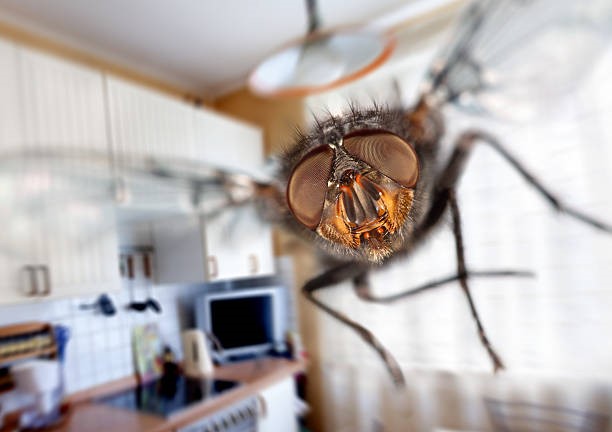
In Singapore’s tropical climate, flies are a common and annoying pest that can invade homes, spreading diseases and creating a nuisance. To maintain a healthy and comfortable living environment, it is essential to control fly populations effectively. This comprehensive guide will provide tips and strategies for controlling fly pests in your home, with insights tailored to the unique conditions of Singapore. Whether you are looking for prevention techniques, natural remedies, or advanced pest control solutions, we have you covered.
Understanding Fly Behavior and Risks
Before delving into control methods, it is important to understand why flies are a problem and the risks they pose.
Types of Flies in Singapore
Several types of flies commonly invade homes in Singapore, including:
1. House Flies (Musca domestica): These are the most common flies and can carry over 100 different kinds of disease-causing germs.
2. Fruit Flies (Drosophila melanogaster): Attracted to ripe or rotting fruits and vegetables, they reproduce quickly and can be difficult to eliminate.
3. Drain Flies (Psychodidae): Often found near sinks and drains, they thrive in moist environments.
4. Blow Flies (Calliphoridae): Known for their metallic appearance, they are often found around decaying meat and garbage.
Health Risks
Flies can transmit various diseases, including:
● Salmonella
● E. coli
● Cholera
● Dysentery
● Tuberculosis
These diseases are often spread when flies land on food or surfaces that humans come into contact with. Controlling fly populations in your home is crucial for maintaining a healthy living environment.
Prevention: The First Line of Defense
The best way to control flies is to prevent them from entering your home in the first place. Here are some effective prevention strategies:
1. Maintain Cleanliness
Keeping your home clean is the most critical step in preventing flies. Here are some tips:
Clean Surfaces Regularly: Wipe down countertops, tables, and other surfaces regularly to remove food residues.
Proper Waste Disposal: Use trash cans with tight-fitting lids and empty them frequently.
Refrigerate Food: Store fruits, vegetables, and other perishables in the refrigerator.
Clean Up Spills Immediately: Any spilled food or drink should be cleaned up immediately to avoid attracting flies.
2. Seal Entry Points
Flies can enter your home through even the smallest openings. Ensure your home is well-sealed by:
Repairing Cracks and Gaps: Check windows, doors, and walls for cracks or gaps and seal them with caulk or weatherstripping.
Installing Screens: Use screens on windows and doors, and ensure they are in good repair.
Using Door Sweeps: Install door sweeps on exterior doors to eliminate gaps.
3. Manage Outdoor Areas
Flies often breed and thrive in outdoor areas before making their way inside. Manage these areas by:
Maintaining Your Yard: Keep your yard clean and free of decaying organic matter.
Proper Composting: If you compost, ensure it’s done correctly to avoid attracting flies.
Pet Waste Management: Clean up pet waste promptly, as it can attract flies.
Natural Remedies for Fly Control
If flies have already made their way into your home, natural remedies can be an effective first step in controlling them. Here are some natural methods to consider:
1. Essential Oils
Certain essential oils have fly-repellent properties. These include:
● Lavender Oil
● Eucalyptus Oil
● Peppermint Oil
● Lemongrass Oil
To use essential oils, mix a few drops with water in a spray bottle and spray around your home, particularly near windows and doors.
2. Vinegar and Dish Soap Trap
This simple trap is effective for capturing fruit flies:
Fill a bowl with apple cider vinegar and add a few drops of dish soap.
The vinegar attracts the flies, while the dish soap reduces the surface tension, causing them to drown.
3. Basil and Mint Plants
Planting basil and mint around your home can help repel flies. These plants emit scents that flies find unpleasant.
4. Homemade Fly Paper
You can create your own fly paper using the following method:
● Mix equal parts of sugar, honey, and water.
● Spread the mixture onto strips of brown paper or cardboard.
● Hang the strips in areas where flies are most active.
● Advanced Fly Control Methods
● When natural remedies are not enough, you may need to turn to more advanced fly control methods. Here are some effective options:
Insecticides
Insecticides can be an effective way to control fly populations, but they should be used with caution. Always follow the manufacturer’s instructions and consider the following types:
Residual Sprays: These sprays provide long-lasting protection and can be used around entry points and fly hotspots.
Space Sprays: These are used to treat large areas and are effective for immediate fly reduction.
Bait Traps: These traps use attractants combined with insecticides to lure and kill flies.
Fly Zappers
Fly zappers use ultraviolet light to attract flies, which are then killed by an electric grid. They are effective for controlling flies in both indoor and outdoor settings.
Fly Traps
Commercial fly traps are available in various forms, including sticky traps, bait traps, and light traps. These traps can be strategically placed around your home to capture and kill flies.
Professional Pest Control Services in Singapore
If fly infestations persist despite your best efforts, it may be time to call in professional pest control services. Pest control professionals in Singapore have access to advanced tools and treatments that can effectively eliminate fly populations. They can provide customized solutions tailored to the specific needs of your home and environment.
Benefits of Professional Pest Control
Expert Knowledge: Professionals have the expertise to identify the type of flies and the best treatment methods.
Advanced Treatments: Access to powerful, regulated pesticides and tools not available to the general public.
Long-Term Solutions: Implementation of long-term strategies to prevent future infestations.
Choosing the Right Pest Control Service
When selecting a pest control service in Singapore, consider the following:
Reputation: Look for companies with positive reviews and a strong reputation for effective service.
Certifications: Ensure the company is certified and adheres to Singapore’s pest control regulations.
Guarantee: Choose a service that offers a satisfaction guarantee or follow-up treatments if needed.
Conclusion
Controlling fly pests and maintaining a bug-free home in Singapore requires a combination of prevention, natural remedies, advanced control methods, and long-term strategies. By implementing the tips and techniques outlined in this guide, you can effectively reduce and eliminate fly populations in your home, creating a healthier and more comfortable living environment.
Remember, the key to successful fly control is consistency. Regular cleaning, proper waste management, and vigilance in sealing entry points will go a long way in keeping flies at bay. Should you encounter persistent fly problems, don’t hesitate to seek professional help to ensure your home remains fly-free.
For expert pest control services in Singapore, consider reaching out to reputable companies that can provide tailored solutions for your specific needs. With their help, you can enjoy a fly-free home all year round.
